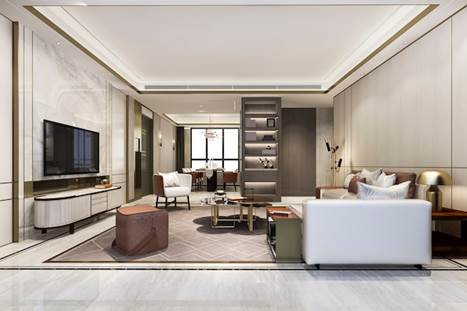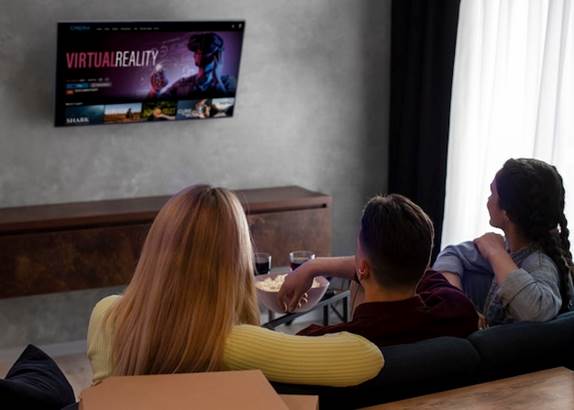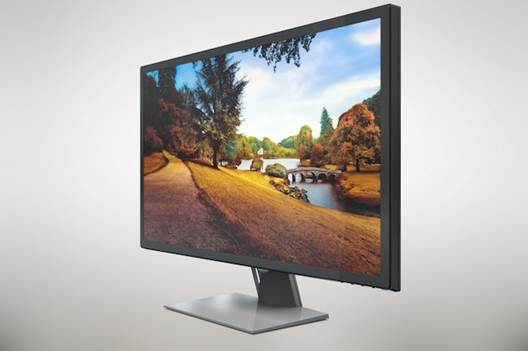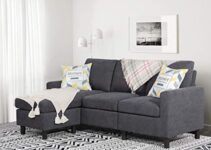Choosing the right size of TV can make a big difference in your viewing experience. When deciding what size TV to buy, it’s important to consider the viewing distance, room size, and your personal preferences to ensure that you get the best possible picture quality and viewing experience.
Purchasing a new TV is always an exciting experience for all family members. All in all, thanks to massive steps in repairs, climbing, and backlighting, we can stay closer to our TVs than we used to before – apart from that awesome display. Do not forget that no matter what kind of item you choose, it is still essential to purchase a TV that is the perfect size for the room where you’ll be watching it. Yes, you will consider a few characteristics of larger screens in the present, but the larger screen in a smaller room can still be stronger, especially for your eyes.
Whenever one purchases a TV, the foremost thing you’ll have to prioritize is size. It’s too small and you’ll watch TV shows while the biggest TV will dominate and fill the room and you won’t stay far enough to accommodate it all.
With all that being said, let us have an insight into what to consider when selecting the right size of TV for one’s living area.

Prioritize screen size.
The TV screens are always calculated in a diagonal manner from own corner to the other, so a 65-inch TV is close to 55 inches wide. The larger the better, in most of the aspects- the more immersed it is and the comfier it is to see. But if the screen is too large, it will not fit right in the small space you have.
How to measure the TV size of the living room?
Before you consider if you want LCD TV, OLED TV, or Ultra HD TV, you would have to decide where you have to place the TV in the living room. Once you have chosen a proper location, calculate the length, breadth, and deepness of the space(there may be limits due to the size of the entertainment center or the amount of space on the wall). Once you’ve decided what size of TV to buy, consider incorporating some of these stylish bedroom wall decor ideas to enhance the ambiance of your space.
Afterward, whenever you purchase, you can contrast that to the real TV ratings, not the size of its screen, to ensure you will fit. You will find that some TVs have larger feet than others with the same screen size, so keep an eye on the size to see if it will fit in your space.

How wide is the TV stand?
The second size-related priority is the attached TV stand. If you can’t mount your new TV on the wall, this will play a big role in how much space it takes on your console table, and many new TVs have feet on the far edges. You will have to ensure wherever you plan to place the television is wide enough to fit the stand. You will want to be strong here, too. Often, people think it is safe to let the corners go, forgetting that it is designed to rest on a flat surface. Failure to do so, and too little air can cause everything to fall apart.
In cases where you can mount your TV against the wall and not see yourself getting away from home theater furniture, you can always select an international TV stand. Like a standard TV wall mount, VESA-authorized arms are nailed to the back of your TV, while the mounting bracket is mounted on the stand of the stand. Many worldwide stand will also be tilted and turned up and down, as well as left and right.
How far will you sit from the TV?
The next point to ponder is where you will be sitting in relation to the TV. There are TV viewing calculators (here is another calculator) that recommend the screen size of the TV based on your living space. If you do not want to bother with an online calculator, there is a simplified calculation you can do to fix it yourself: Measure the distance from your seat to the TV by inches and multiply by 0.84. This should give you the right screen size and the right size for your space.
This method is incomplete, of course. For instance, if you are sitting 8 feet far from the TV, the figures need an 80-inch screen, and this might be false for most of us. Most living rooms will show at least 50 inches of screen size and, the taste and style will be more resolved as it will have a viewing angle. So you can go as big as you like and purchase a larger screen size.

Know your preferred resolution
TVs of the modern age offer three options for resolution – 1080p, 4K, and 8K. People always prefer 4K to everybody but the adjustment might alter how close you are to the set and how much it will cost.
- Measuring in field of view
Viewing space means how much space the display takes up in contrast to what else your eyes see. In the theater, for instance, the viewing area is too big because there is nothing else you can see. In a home theater, the viewing area is usually smaller, and larger depending on where you place your living space and the length of your tv.
Experts generally prefer a viewing field of about 30 to 36 degrees. For a 50-inch TV, that would mean sitting next to 5.6 feet. If you have a small area, you can use the rear view area to choose the size of your TV based on where people will sit to watch TV.
Don’t get confused in the viewing field with the viewing angle, which shows how easier it is to see the TV from the sides. The viewing angle depends on the type of panel, but the size can also help.

- Size Vs quality
If you’re trying to enhance screen real estate on a tight budget, you’re going to have to leave picture quality. Instead of going for a big 65-inch 4K TV from a small shelf product for only $ 500, consider choosing a 55-inch small model, with a big name next to it for $ 550. It probably has the best screen and best resolution, and that will lead to a more resolved look, especially if you are having HDR. Also, 55 inches is not yet thought to be a small TV! Being too big can make an unpleasant look in a small space – much like sitting in front of a movie theater. Also, whether it is not 4K, it may look a little too close.
Conclusion
Larger and closer ones are always preferred whenever you are selecting an adequate TV size for the living space. Along with its impact on the TV cost, it significantly affects the image resolution considered too. Measure the distance using the distance calculator to have an idea of which size of TV you need to buy keeping in view the distance of the TV from the couches. Do not purchase a big TV in your living space. Calculate the distance from your sofa to where you will place your TV, and use the screen size of our free TV to get the full-screen size.


